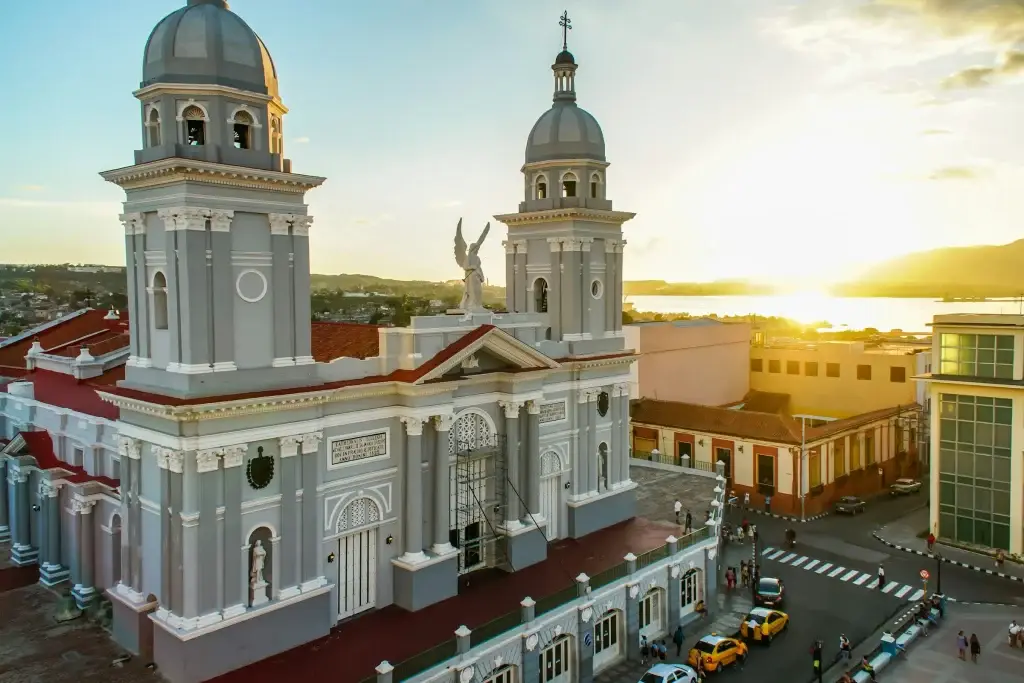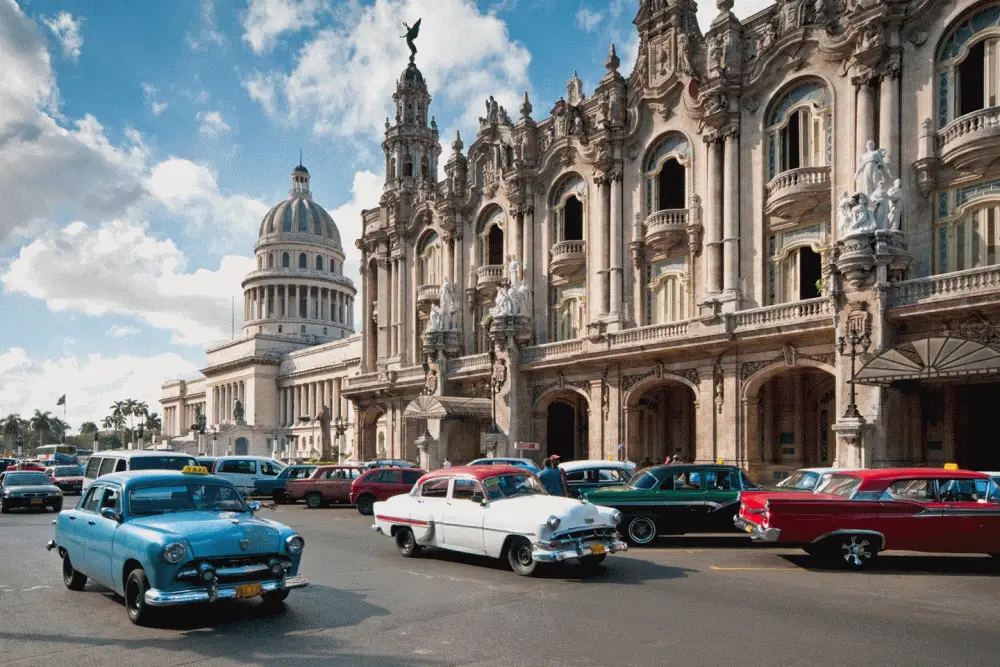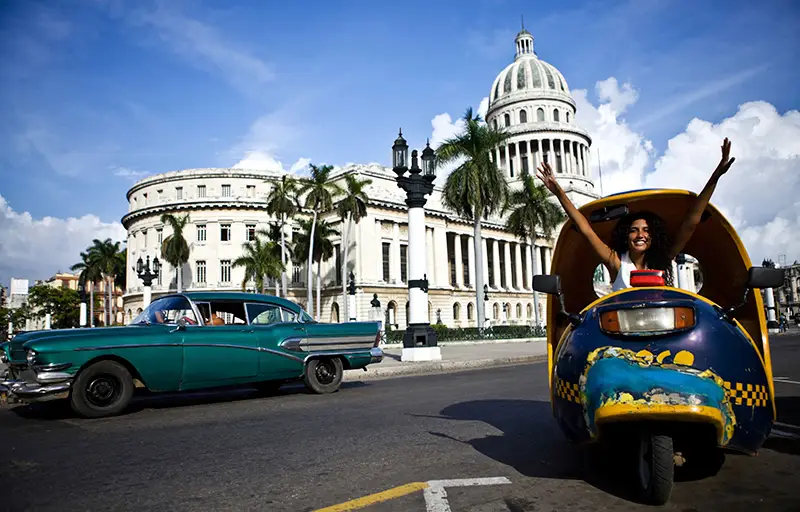Cuba is not only about sun, beaches, and salsa rhythms, but also the homeland of one of the most famous alcoholic beverages in the world. Rum is represented by numerous brands that have gained recognition worldwide. The country produces both light varieties, perfect for cocktails, and aged options with a rich flavor.
In this article, we will tell you more about the rum made in Cuba and how Cuban alcohol production differs from other countries in the Caribbean region.

From Pirates to Global Recognition
The history of Cuban rum dates back to the 16th century when Spanish conquerors introduced sugarcane to the island. Initially, the locals made rough alcohol from it, but over time, the technologies improved, giving rise to a light, aromatic beverage that became the country’s hallmark.
In the 19th century, Cuban masters began using the method of double distillation and aging in oak barrels, which made the alcohol taste smoother and richer. Thanks to these improvements, the drink became popular among the aristocrats of Europe and America.
After the revolution of 1959, the production of Cuban rum came under state control. Many famous brands, such as Bacardi, were forced to leave the island, but new, equally high-quality brands emerged in their place.
Best “Caribbean Drinks”: Key Brands
What kind of rum is made in Cuba? The island produces both classic varieties for cocktails and elite aged options. There are many brands in the country that are considered the best in the world.
Havana Club – Symbol of Cuba
The most recognizable brand that has become synonymous with Cuban alcohol. The range includes both young and aged varieties. The most popular ones are Havana Club Añejo 3 Años for cocktails and the 7-year-old Añejo for connoisseurs of complex aromas.
Santiago de Cuba – Eastern Traditions
A brand originating from the city of Santiago de Cuba, considered the cradle of Cuban rum. Produced according to ancient recipes, it stands out for its velvety texture and rich bouquet. Santiago de Cuba Extra Añejo 11 Años is one of the most prestigious varieties.
Cubay – Taste Balance
Less known outside of Cuba, this brand is highly appreciated by connoisseurs. Cubay offers a wide range from young to aged varieties. The alcohol is known for its smoothness and fruity notes, earning it a prestigious place among the best Cuban rums.
Legendario – Aromatic Classic
A favorite drink among many tourists with a rich caramel-vanilla flavor. Legendario Elixir de Cuba is particularly popular, a sweet liqueur variant perfect for enjoying neat.
Varadero – Alcohol with Character
Another classic representative of Cuban rum, distinguished by a rich, slightly bitter aftertaste. An excellent choice for those who enjoy strong drinks with a long finish.
Mulata – Softness and Sweetness
This brand is suitable for those looking for a less strong and sweeter rum. Mulata is known for its vanilla-fruit shades, making it an ideal choice for cocktails.
Cuban Rum Production Process
Authentic alcohol is created using a unique technology passed down through generations. The process consists of several stages:
- Selection of sugarcane. It is important for the raw material to be as fresh as possible, as it is used to extract molasses – the basis of future rum. The richer the molasses in natural sugars, the more flavorful the drink.
- Fermentation. Yeast is added to the molasses to initiate the fermentation process. Yeast breaks down sugar, producing alcohol, and releasing characteristic aromatic substances that give Cuban rum its complex flavor notes.
- Distillation. After fermentation, the liquid undergoes distillation. Cubans use the column distillation method, which yields light and smooth spirits.
- Aging. The alcohol matures in oak barrels, acquiring caramel and woody tones. Depending on the brand, the process can last from several months to several decades.
- Blending. After aging, the rum goes through a blending stage where master blenders combine spirits of different ages to create the perfect flavor balance.
A distinctive feature of Cuban rum production is the use of exclusively natural ingredients and the absence of artificial additives.
What Rum is Made in Cuba for Cocktails?
Cubans love cocktails, and they need a special drink for them. The best options for preparing popular drinks are:
- Daiquiri – made with Havana Club 3 Años, lime, and sugar;
- Mojito – perfect with Havana Club or Varadero, fresh mint, and soda;
- Cuba Libre – a classic mix of Santiago de Cuba, cola, and lime.
If you are wondering which rum to bring from Cuba for home cocktail experiments, choose young varieties with bright citrus notes.
Rum and Culture
Cuban culture is closely linked to the drink. It is present at all celebrations, festivals, and gatherings. It is customary on the island to drink alcohol in small portions, savoring the taste.
An ancient tradition is to share the first sip with the earth, saying “Para los santos” (“For the saints”) to show respect for the spirits of ancestors.
In addition, Cubans believe that rum helps start conversations, strengthens friendships, and creates an atmosphere of joy. In any bar, you can find locals discussing news over a glass of aromatic drink.

Conclusion
Now you know what rum is made in Cuba and which brands deserve attention. From the legendary Havana Club to the elegant Santiago de Cuba, from the smooth Mulata to the rich Varadero – the choice depends only on your preferences.
If you are unsure which rum to bring from Cuba, try several options: one for cocktails, another for slow enjoyment. The island is a place where every drop of the drink is imbued with the incomparable Caribbean spirit!


 Santiago de Cuba is not just a southern city, but a real cultural mosaic. Afro-Caribbean energy, music, religion, and philosophy are all concentrated here. To understand what to see in Cuba, it is enough to walk along the Santiago promenade – here you can meet ritual dances, brass ensembles, artists telling stories through pigments.
Santiago de Cuba is not just a southern city, but a real cultural mosaic. Afro-Caribbean energy, music, religion, and philosophy are all concentrated here. To understand what to see in Cuba, it is enough to walk along the Santiago promenade – here you can meet ritual dances, brass ensembles, artists telling stories through pigments. Cuba breaks the usual holiday routes. You can’t just “go to the centre” here, because it goes into the music, into the people, into a building without walls, into a square where children dance. The answer to the question of what to see in Cuba includes not only the sights, but also the rhythm itself, the smell of cane, the taste of coffee, the wind from the sea and the song sung at midnight.
Cuba breaks the usual holiday routes. You can’t just “go to the centre” here, because it goes into the music, into the people, into a building without walls, into a square where children dance. The answer to the question of what to see in Cuba includes not only the sights, but also the rhythm itself, the smell of cane, the taste of coffee, the wind from the sea and the song sung at midnight.
 Caribbean beaches are a paradise for lovers of seaside holidays. Transparent turquoise water, snow-white sand, palm trees sloping to the water and warm climate create ideal conditions for beach relaxation.
Caribbean beaches are a paradise for lovers of seaside holidays. Transparent turquoise water, snow-white sand, palm trees sloping to the water and warm climate create ideal conditions for beach relaxation. Why visit Cuba? Because it’s not just a holiday, but a complete immersion into another world. A world where bright colours, incendiary music and inexpressible atmosphere create a unique experience. Cuba 2025 awaits new travellers, offering the best resorts, beaches, gastronomy and cultural experiences. Go where life is vibrant, history comes alive and holidays are an adventure.
Why visit Cuba? Because it’s not just a holiday, but a complete immersion into another world. A world where bright colours, incendiary music and inexpressible atmosphere create a unique experience. Cuba 2025 awaits new travellers, offering the best resorts, beaches, gastronomy and cultural experiences. Go where life is vibrant, history comes alive and holidays are an adventure.